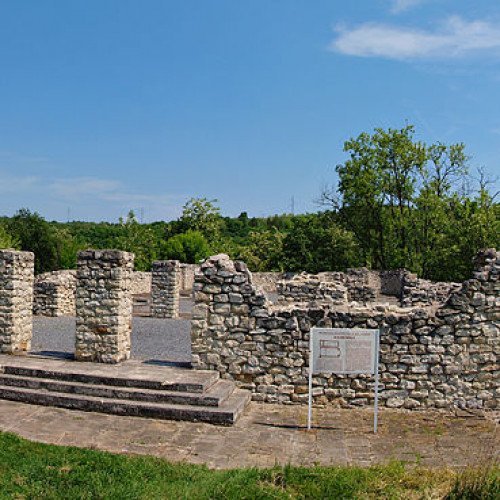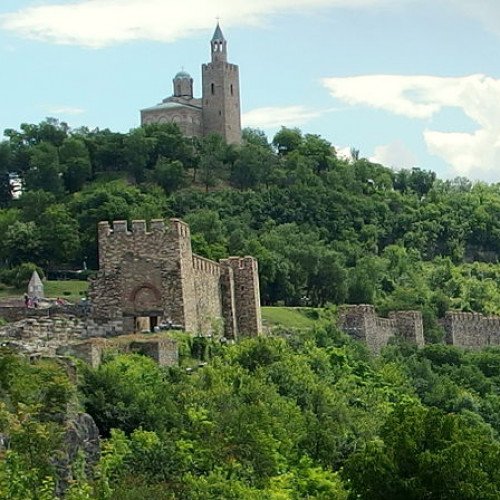Castles of "Bulgaria" STORGOSIA vs TSAREVETS (FORTRESS)

STORGOSIA
Storgosia was a Roman road station and later a fortress, located in the modern Kaylaka Park in the vicinity of modern Pleven (North-central Bulgaria). It accommodated detachments of Legio I Italica's Novae (modern Svishtov) garrison. The station grew to become a fortress in Late Antiquity due to Gothic and other Barbarian raids after 238. At the beginning of the 4th century, 31,000 square metres (330,000 sq ft) were fortified with a defensive wall that was 2.20 metres (7.2 ft) wide. Archaeological excavations have also discovered two gates and three defensive towers, as well as residential buildings, a large 4th-century basilica of 45.20 by 22.20 metres (148.3 by 72.8 ft), and a public granary. The fortress existed until the end of the 6th century, when the settlement of the Slavs apparently led to its abandonment and during the rule of the Ottoman Empire the fortress was practically destroyed (probably in the 16th century), so that the stones could be used for the construction of a wall around the Turkish barracks in Pleven.
Statistics for this Xoptio

TSAREVETS (FORTRESS)
Tsarevets (Bulgarian: Царевец, romanized: Tsarevets) is a medieval stronghold located on a hill with the same name in Veliko Tarnovo in northern Bulgaria. Tsarevets is 206 metres (676 ft) above sea level. It served as the Second Bulgarian Empire's primary fortress and strongest bulwark between 1185 and 1393, housing the royal and the patriarchal palaces, and it is also a popular tourist attraction. The earliest evidence of human presence on the hill dates from the 2nd millennium BC. It was settled in the 4th century and a Byzantine city, tentatively identified with Zikideva, was constructed near the end of the 5th century, on the grounds of which the construction of the Bulgarian stronghold was begun in the 12th century. After the Vlach-Bulgarian Rebellion and the establishment of the Second Bulgarian Empire with its capital in Veliko Tarnovo, the fortress became the most important one in Bulgaria, often compared with Rome and Constantinople in magnificence. In 1393, the stronghold was besieged by Ottoman forces for three months before finally being conquered and burnt down on 17 July, which marked the fall of the Bulgarian Empire. It has three entrances. The main entrance is located in the easternmost side of the hill. The castle complex is located in the centre, surrounded by an internal stone wall, two battle towers and two entrances - north and south. It consists of a throne hall, castle church and the king's chamber. The restoration of the fortress Tsarevets began in 1930 and was completed in 1981 in honour of the 1300 anniversary from the establishment of the Bulgarian state. Kings Petar, Asen, Kaloyan and Ivan Asen the second lived there.